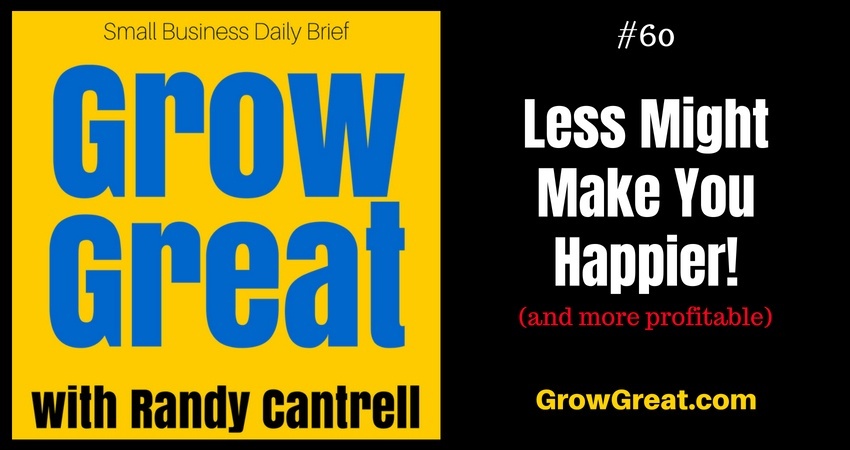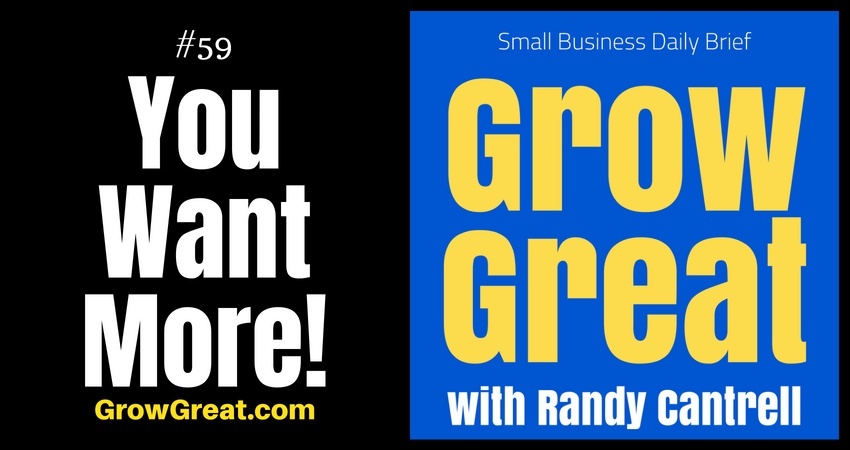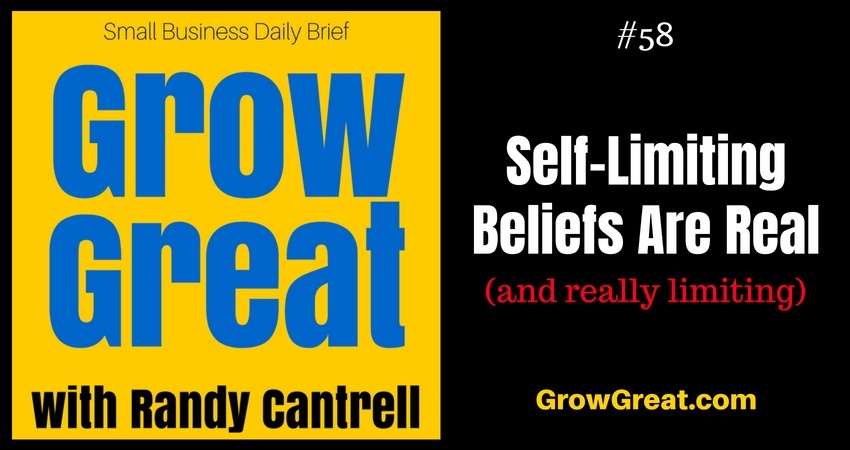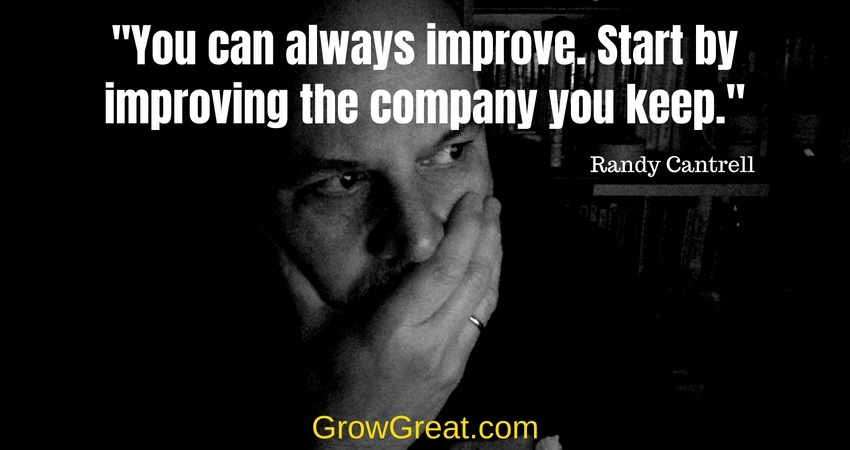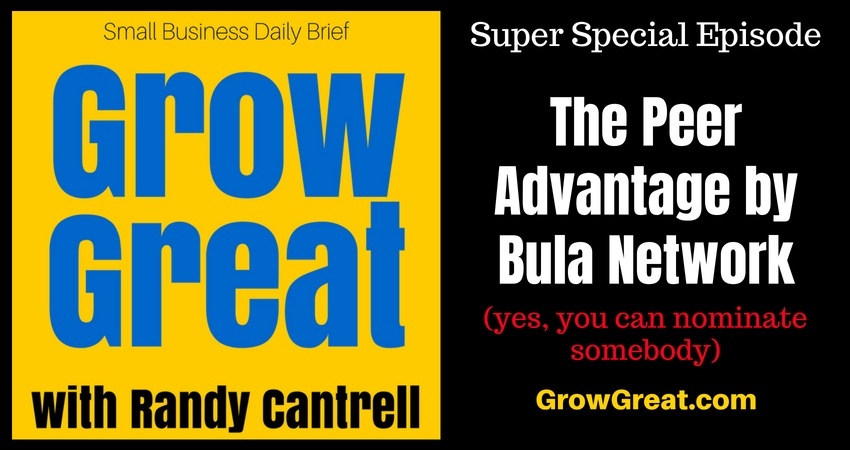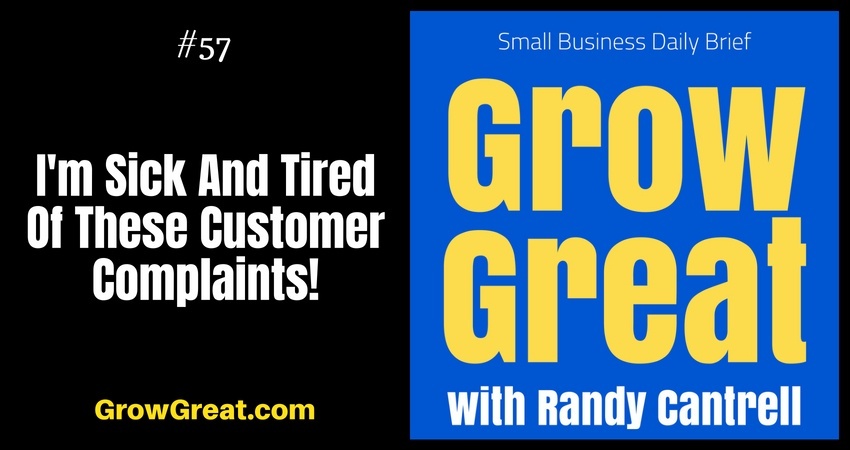Hiding Prolongs The Agony (be a buffalo) – Grow Great Small Business Daily Brief #61 – August 15, 2018
Podcast: Play in new window | Download (Duration: 9:52 — 10.2MB)
Subscribe: Apple Podcasts | Spotify | Email | RSS | More

We don’t want to admit it, but sometimes we hide. Everybody does it. Sometimes.
Some people do it often. I’ve even known people who appeared to do it all the time!
We don’t call it hiding. We’re just waiting for the right time to handle it. Something else came up that requires our immediate attention. Excuses.
Hesitation. Procrastination. Avoidance. It’s all the same thing as hiding.
I was born in Oklahoma, what was once Indian territory. In fact, the county where I was born is Ponotoc County. The county was created at statehood from part of the Chickasaw Nation. Pontotoc is usually translated “cattail prairie” or “land of hanging grapes.” I remember cattails, but no hanging grapes.
I can’t remember when I first heard the story of buffalo during thunderstorms, another trait of Oklahoma hence the name, “Tornado Alley.” It feels like one of those stories I’ve always known. After catching myself telling it to somebody a few years ago, I finally decided to fact check it to see if it was true. Sure enough, it is.
Thunderstorms typically come up out of the west and move east. As the storm approaches the area there are cattle out in a field, and buffalo in an adjacent field. Which direction do you think each herd of animals travel once they sense the coming storm?
The cattle will travel east with the storm. But not the buffalo. For some reason they start charging toward the storm, traveling west. Question: which animals are in the storm the longest, the cattle or the buffalo?
Yep, the buffalo get through the storm quicker because they’re going in the opposite direction of the storm, even though they’re heading directly into it. By traveling with the storm, the cattle are caught in the storm for who knows how long!
The lesson is simple. We can run and hide like cattle and endure the agony of the storm longer…or we can be like buffalo, fearlessly going into the storm knowing that it’ll shorten our agony. Make sense, right? Then why don’t we do instinctively do it, like buffalo? Because we’re often more like chickens than buffalo.
Hiding feels good. I guess the cattle feel good, thinking they’ll outrun the storm. Of course, they can’t. They end up being in the storm much, much longer than if they’d just stayed put. Shorter if they’d followed their buffalo brethren and dashed headlong into the storm.

Here’s the best illustration of overthinking – which is largely the culprit for our hiding – that I’ve ever seen. A little boy is in the water, on his back, holding on for dear life onto a rope stretched across his chest. Crying and clearly worried, the little boy has no idea that if he’d just put his feet down he could stand up. Finally, a woman – presumably his mom – comes and shoves his feet down into the water, helping him stand up. Instantly, he stops crying because he realizes his fears aren’t going to be realized.
So it is with our hiding. Our fears are mostly much worse than reality. Hiding prolongs the worry. But the agony has a higher price tag than that.
Hiding Robs Us
Thankfully I’ve never been subjected to a robbery or theft. I’ve been conned, which is sort of the same thing. That’s a story for another day. It doesn’t feel good. Being duped, or robbed. Hiding is self-perpetrated robbery. We do it to ourselves. That makes it even stupider.
In the moment, it feels better. If we spend too much time thinking about it, we can rationalize it, too. Making it seem logical and right.
Which is why speed is important. I wish I could convince myself and others that we can think it through and overcome our hiding, but it won’t work. The only remedy for hiding is to charge forward. Take action. It’s not about facing fear or overcoming fear. It more about just doing it in spite of our fear!
I used to focus a bit on the question, “What’s the worst thing that can happen?” I’d encourage myself and others to have the courage to answer the question. Usually, the answer isn’t all that bad, but what if it is. Like the litlte boy holding onto the rope, he might answer, “I’ll drown and die.” Which is why I don’t ask or answer that question too much anymore.
Instead, just do something. I don’t even think what we do is all that important. The little boy could put his feet down while still holding onto the rope, but like us when we hide, he’s stuck.
Hiding robs us of taking action – which has all sorts of negative consequences – and it sticks us right where we are, which is why we’re hiding to begin with. Nothing good comes from it. We just endure the beating storm longer.
Doing Anything Is Better Than Doing Nothing
Fear is why we hide. You may want me to encourage you to identify and face your fear. I’m not. Don’t waste your time. Trust me, I’m a lifelong dot connector. That means I can be very prone to overthink something. It’s not a stall tactic for me as much as it’s a congruency thing. I’m trying to fit things together so they make sense to me. So when a person says one thing, but act in ways contrary to what they say, I try to figure out what’s really going on. Empathy is my drive to understand. One side of empathy is dot connecting and making sense of things. It’s a super power. The flip side is trying to make sense of things that are senseless and don’t fit. Somethings are incongruent. So my super power of empathy becomes a curse and I’m the little boy holding onto the rope for dear life.
The remedy is to do something. And the quicker, the better.
Do The Thing You Most Dread
You’ve heard this before…because it’s smart. And wise. It’s also practical.
The thing you most dread is the thing giving you the urge to hide. To avoid. By doing the very thing you fear, or dread, you’re moving in the direction of the solution, like the buffalo. Maybe it won’t be exactly right, but you’ll figure it out. Once you’re moving you can adjust for where you’re getting it wrong. The more you adjust, the closer you get to getting it right. This is where our need for speed can serve us well. Get your first shot off. Just aim it toward the target, see how close you came to hitting the bull’s eye, then adjust before taking the second shot. Rinse and repeat. We never hit the target unless we pull the trigger though.
Besides, by taking aim at what we dread, we get over it sooner. It’s a win-win.
Right now you’re dreading something. Mel Robbins is a motivational speaker and author of the book, The 5 Second Rule. Her advice is solid. Count to 5 and do it.
Be well. Do good. Grow great!
Now start counting.



